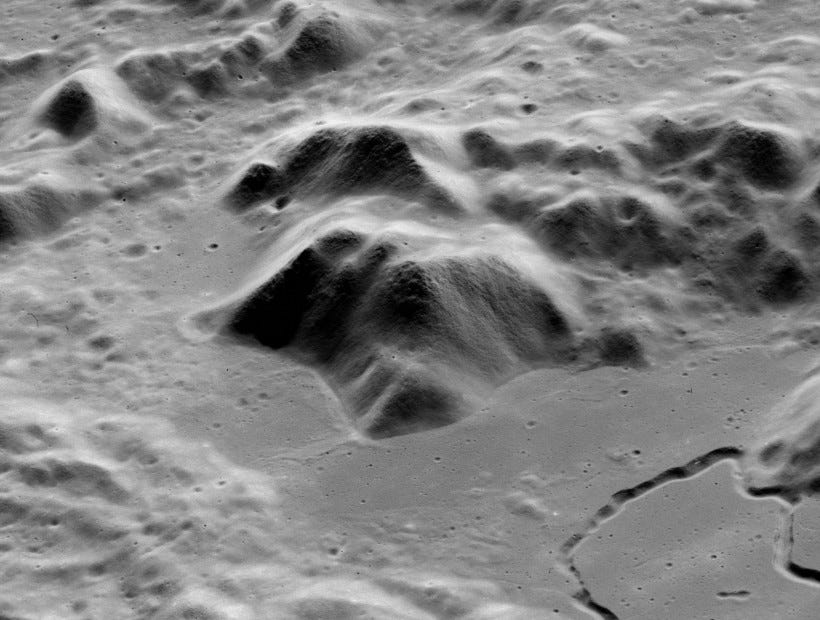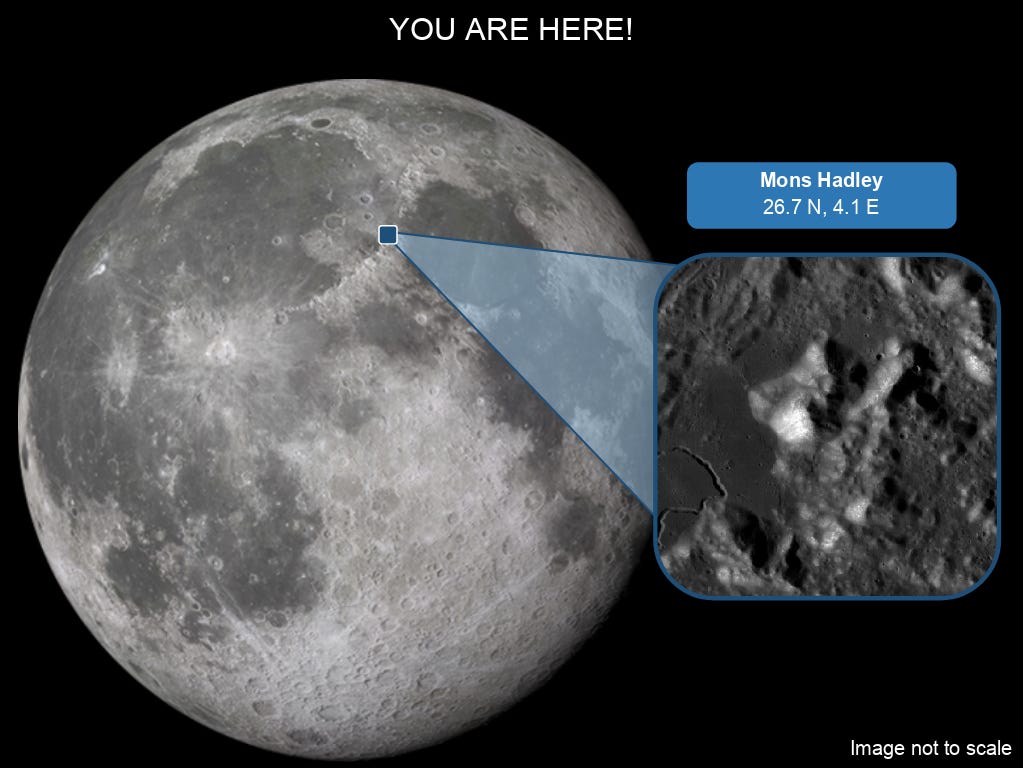A peak at Hadley
Seen here the 4 kilometers tall and 25 kilometers wide Haldey mountain as captured from orbit by Apollo 15.

Mons Hadley is part of a geologically rich area on the Moon. A lava-carved channel rests besides the mountain, near which the Apollo 15 astronauts landed. Hadley itself is part of a 600 kilometers wide mountain range called Apenninus.
The Apenninus mountain range, including Mons Hadley, formed about 3.8 to 3.9 billion years ago when the basin of Mare Imbrium was excavated by an asteroid impact. The impact uplifted nearby material from the Moon's crust, that outcropped in the form of the Apenninus mountains.
Rock samples from such mountains are key to understanding the lunar past. Mountains in multi-ring impact basins are also crucial to understanding the formation of such basins and how they affect the Moon’s geological evolution, as well as that of other planetary bodies.

